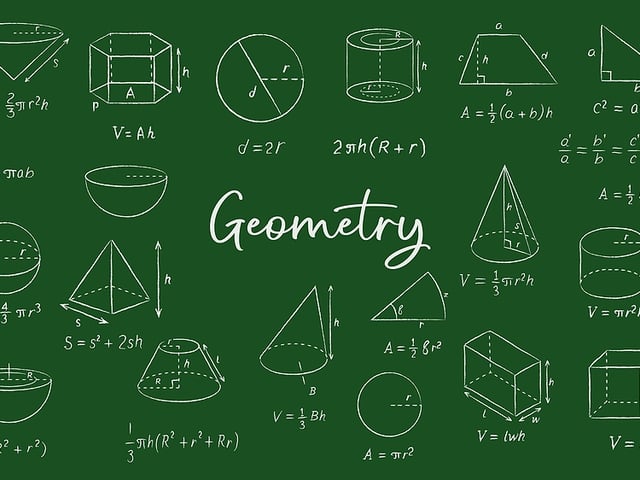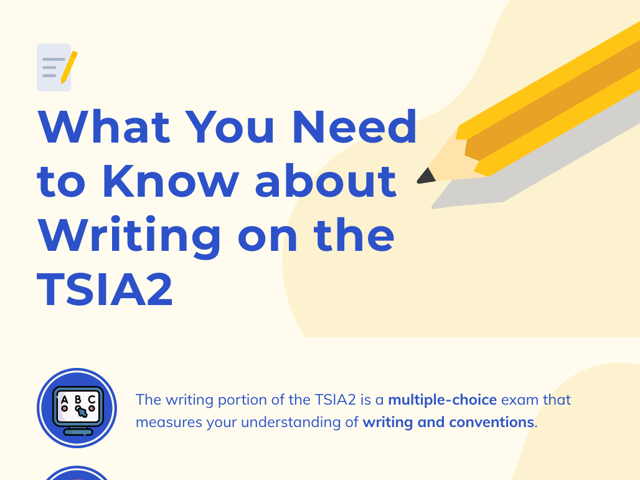
Geometry and Measurement Formulas for the TSIA2
If you want to have the skills needed to succeed in Math, it’s very important that you remember the specific formulas needed to solve each problem. That becomes particularly important when solving the Geometry and Measurement problems in the TSIA2. Here at Union Test Prep, we have what you need. In the following chart you’ll find the Geometry and Measurement Formulas you’ll need for the TSIA2.
You’ll also want to check out our other two math formula charts for this test:
Formulas for Algebra and Functions
Formulas for Data Analysis, Statistics, and Probability
You can practice using these formulas by accessing the math sections of our free TSIA2 prep materials.
Geometry and Measurement Formulas
| Category | Formula | Symbols | Comment |
|---|---|---|---|
| The XY Plane | \(Ax+By=C\)` | A, B, C = any real number y = dependent variable x = independent variable |
Standard Form |
| The XY Plane | \(y=m \cdot x + b\) | y = dependent variable m = slope x = independent variable b = y-axis intercept |
Slope-Intercept Form: Try to convert any given linear equation to this form. |
| The XY Plane | \(m=\dfrac{(y_2-y_1)}{(x_2-x_1)}\) | m = slope \(y_n\) = dependent variable (at point n) \(x_n\) = independent variable (at point n) |
This is a rearrangement of the point-slope form. |
| The XY Plane | \(y-y_1=m(x-x_1)\) | \((x_1, y_1)\) = point on the line y = dependent variable x = independent variable m = slope |
Poit-Slope Form |
| The XY Plane | \(d = \sqrt{(y_2-y_1)^2 + (x_2-x_1)^2}\) | d = distance between two points \(y_n\) = y value at point n \(x_n\) = x value at point n |
|
| Circles | \((x-h)^2 + (y-k)^2 = r^2\) | (h, k) = center of a circle r = radius |
Standard Form of a circle |
| Circles | \(x^2+y^2+Ax+By+C=0\) | x, y = variables A, B, C = constants |
General Form of a circle |
| Circles | \(C=2 \cdot \pi \cdot r\) \(C=\pi \cdot d\) |
C = Circumference (perimeter) of a circle r = radius d = diameter |
|
| Circles | \(s=r \cdot \theta\) | s = arc length r = radius \(\theta\) = central angle (radians) |
|
| Circles | \(A=\pi \cdot r^2\) | A = Area of a circle r = radius |
|
| Triangles | \(P=s_1+s_2+s_3\) | P = Perimeter of a triangle \(s_n\) = side length |
|
| Triangles | \(A=\frac{1}{2}b \cdot h\) | A = Area of a triangle b = base h = height |
|
| Triangles | \(a^2+b^2=c^2\) | a, b = legs of a right triangle c = hypotenuse of a right triangle |
Pythagorean Theorem |
| Quadrilaterals | \(P=4 \cdot s\) | P = Perimeter of a square s = length of a side |
|
| Quadrilaterals | \(P= (2 \cdot l)+(2 \cdot w)\) | P Perimeter of a rectangle l = length w = width |
|
| Quadrilaterals | \(A=s^2\) | A = Area of a square s = length of a side |
|
| Quadrilaterals | \(A = l \cdot w\) | A = area of a rectangle l = length w = width |
|
| Quadrilaterals | \(A = h \cdot \dfrac{(b_1+b_2)}{2}\) | A = Area of a trapezoid \(b_b\) = base n h = height |
|
| 3-Dimensional Objects |
\(V = l \cdot w \cdot h\) | V = Volume of a rectangular prism l = length w = width h = height |
|
| 3-Dimensional Objects |
\(SA = \Sigma A_{fi}\) | SA = Surface Area of a prism \(A_{fi}\) = Area of face i |
|
| 3-Dimensional Objects |
\(V= \frac{1}{3} (l \cdot w \cdot h)\) | V = Volume of a pyramid l = length w = width h = height |
|
| 3-Dimensional Objects |
\(V= \pi \cdot r^2 \cdot h\) | V = Volume of a cylinder r = radius h = height |
|
| 3-Dimensional Objects |
\(SA=2B + (C \cdot h)\) | SA = Surface Area of a cylinder B = Area of the Base C = Circumference of the Base h = height |
|
| 3-Dimensional Objects |
\(V= \frac{4}{3} \cdot \pi \cdot r^3\) | V = Volume of a sphere r = radius |
|
| 3-Dimensional Objects |
\(SA=4 \cdot \pi \cdot r^2\) | SA = Surface Area of a sphere r = radius of the sphere |
Keep Reading

TSIA2 Blog
Math Covered on the TSIA2
The TSIA2 is a mandatory test for students entering higher education in…

TSIA2 Blog
What You Need to Know about Writing on the TSIA2
The writing portion of the TSIA2 is a multiple-choice exam that measure…

TSIA2 Blog
Reading on the TSIA2: What You Need to Know
The TSIA2 reading exam is an interesting one, in that it is coupled wit…